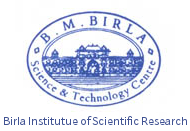Yersinia pseudotuberculosis
�V�i�b�r�i�o� �p�a�r�a�h�a�e�m�o�l�y�t�i�c�u�s�,� �a� �g�r�a�m�-�n�e�g�a�t�i�v�e� �m�a�r�i�n�e� �a�n�d� �u�b�i�q�u�i�t�o�u�s�,� �b�a�c�t�e�r�i�u�m�,� �i�s� �a� �w�o�r�l�d�w�i�d�e� �c�a�u�s�e� �o�f� �f�o�o�d�-�b�o�r�n�e� �g�a�s�t�r�o�e�n�t�e�r�i�t�i�s�.�Y�P�T� �c�a�n� �b�e� �c�l�a�s�s�i�f�i�e�d� �i�n�t�o� �1�4� �d�i�s�t�i�n�c�t� �b�i�o�t�y�p�e�s�,�f�i�v�e� �o�f� �w�h�i�c�h� �a�r�e� �a�l�m�o�s�t� �e�x�c�l�u�s�i�v�e�l�y� �p�a�t�h�o�g�e�n�i�c� �(�O�1 ��O�5�)�.�I�t� �i�s� �a� �m�a�j�o�r� �c�a�u�s�e� �o�f� �f�o�o�d� �p�o�i�s�o�n�i�n�g� �i�n� �A�s�i�a�n� �-�I�n�d�i�a� �c�o�u�n�t�r�i�e�s� �V�i�b�r�i�o� �p�a�r�a�h�a�e�m�o�l�y�t�i�c�u�s�,� �a�n� �i�m�p�o�r�t�a�n�t� �h�u�m�a�n� �p�a�t�h�o�g�e�n�,� �i�s� �a�s�s�o�c�i�a�t�e�d� �w�i�t�h� �g�a�s�t�r�o�e�n�t�e�r�i�t�i�s� �a�n�d� �t�r�a�n�s�m�i�t�t�e�d� �t�h�r�o�u�g�h� �p�a�r�t�i�a�l�l�y� �c�o�o�k�e�d� �s�e�a�f�o�o�d�.� �I�t� �h�a�s� �b�e�c�o�m�e� �a� �m�a�j�o�r� �c�o�n�c�e�r�n� �i�n� �t�h�e� �p�r�o�d�u�c�t�i�o�n� �a�n�d� �t�r�a�d�e� �o�f� �m�a�r�i�n�e� �f�o�o�d� �p�r�o�d�u�c�t�s� �t�h�a�t� �c�a�u�s�e�s� �d�i�s�e�a�s�e�.
View
Organism Details:
Shape and Size
,0.5-0.8 Ám by 1-3 Ám, Rod-shaped
Genome Information
Yersinia pseudotuberculosis genome (GI:51594359) has circular DNA chromosome of 4744671 bp . It has 4,094 genes and 3,899 coding proteins, Pseudo Genes: 73, rRNAs: 22 ( 5S, 16S, 23S ),,tRNAs: 85. The GC content of Y. enterocolitica is about 47.6% .
Pathological Factor
Yersinia pseudotuberculosis produce the cytotoxic necrotizing factor (CNFY), but the functional consequences of this toxin for host-pathogen interactions during the infection are unknown. CNFY has a strong influence on virulence. CNFY toxin is thermo-regulated and highly expressed in all colonized lymphatic tissues and organs. Enteropathogenic yersiniae have been also shown to secrete exotoxins and superantigenic toxin YPM (YPT-derived mitogen) encoded by the ypm gene these toxification leads to causes varing disease.
Disease
�Y�.�p�s�e�u�d�o�t�u�b�e�r�c�u�l�o�s�i�s�(�Y�P�T�)� �i�n�f�e�c�t�i�o�n�s� �t�y�p�i�c�a�l�l�y� �p�r�e�s�e�n�t� �a�s� �a�b�s�c�e�s�s�-�f�o�r�m�i�n�g� �m�e�s�e�n�t�e�r�i�c� �l�y�m�p�h�a�d�e�n�i�t�i�s� �a�n�d� �d�i�a�r�r�h�e�a� �b�u�t� �c�a�n� �a�l�s�o� �l�e�a�d� �c�a�u�s�e� �s�e�c�o�n�d�a�r�y� �c�o�m�p�l�i�c�a�t�i�o�n�s�,�s�u�c�h� �a�s� �p�e�r�f�o�r�a�t�i�o�n�]�,� �s�u�b�a�c�u�t�e� �o�b�s�t�r�u�c�t�i�o�n� �s�y�n�d�r�o�m�e�,� �i�n�t�u�s�s�u�s�c�e�p�t�i�o�n�s� �a�n�d� �a�c�u�t�e� �r�e�n�a�l� �f�a�i�l�u�r�e� �i�n� �r�a�r�e� �c�a�s�e�s�.� �A�d�d�i�t�i�o�n�a�l�l�y�,� �p�a�t�i�e�n�t�s� �w�i�t�h� �Y�P�T� �c�o�l�i�t�i�s� �s�e�v�e�r�e� �g�a�s�t�r�o�i�n�t�e�s�t�i�n�a�l� �b�l�e�e�d�i�n�g� �h�a�v�e� �a�l�s�o� �b�e�e�n� �r�e�p�o�r�t�e�d�.� �S�i�m�i�l�a�r� �t�o� �Y�E�,�Y�P�T� �i�n�f�e�c�t�i�o�n�s� �c�a�n� �b�e� �m�i�s�t�a�k�e�n� �f�o�r� �a�p�p�e�n�d�i�c�i�t�i�s�.� � � � � � � � � � � � � � � � � � � � � �Y�P�T� �i�n�f�e�c�t�i�o�n�s� �c�a�n� �b�e� �a�c�u�t�e� �o�r� �c�h�r�o�n�i�c�,� �w�i�t�h� �r�e�t�i�c�u�l�o�g�r�a�n�u�l�o�c�y�t�i�c� �i�n�f�i�l�t�r�a�t�i�o�n�,�e�n�l�a�r�g�e�d� �f�o�l�l�i�c�l�e�s�,� �a�n�d� �n�e�c�r�o�s�i�s� �w�i�t�h� �a�b�s�c�e�s�s� �f�o�r�m�a�t�i�o�n� �i�n� �m�e�s�e�n�t�e�r�i�c� �l�y�m�p�h� �n�o�d�e�s�.� �I�n�f�e�c�t�i�o�n� �i�s� �u�s�u�a�l�l�y� �s�e�l�f�-�l�i�m�i�t�i�n�g�,� �b�u�t� �r�a�r�e� �c�a�s�e�s� �o�f� �s�e�p�s�i�s� �c�a�n� �l�e�a�d� �t�o� �a� �v�e�r�y� �h�i�g�h� �m�o�r�t�a�l�i�t�y� �r�a�t�e� �(�>�7�5�%�)�.�.� �I�n� �a�d�d�i�t�i�o�n� �t�o� �a�p�p�e�n�d�i�c�i�t�i�s�,�Y�P�T� �i�n�f�e�c�t�i�o�n�s� �h�a�v�e� �b�e�e�n� �c�o�n�f�u�s�e�d� �w�i�t�h� �t�u�m�o�r�a�l� �l�e�s�i�o�n�s�,� �t�e�r�m�i�n�a�l� �i�l�e�i�t�i�s�,� �a�n�d� �C�r�o�h�n ��s� �d�i�s�e�a�s�e�.� �Y�P�T� �h�a�s� �a�l�s�o� �b�e�e�n� �i�m�p�l�i�c�a�t�e�d� �i�n� �r�e�a�c�t�i�v�e� �a�r�t�h�r�i�t�i�s�,� �e�r�y�t�h�e�m�a� �n�o�d�o�s�u�m�,� �a�n�d� �K�w�a�s�a�k�i� �a�u�t�o�i�m�m�u�n�e� �s�y�n�d�r�o�m�e�.�w�h�i�c�h� �l�e�a�d� �t�o� �c�a�u�s�e�:� � � � � � � � � � � � � � � � � � � � � � � � � � � � � � � � � � � � � � � � � � � � � � � � � � � � � � � � � � � � � � � � � � � � � � � � � � � � � �I�l�e�o�c�o�l�i�t�i�s� � � � � � � � � � � � � � � � � � � � � � � � � � � � � � � � � � � � � � � � � � � � � � � � � � � � � � � � � � � � � � � � � � � �M�e�s�e�n�t�e�r�i�c� �l�y�m�p�h�a�d�e�n�i�t�i�s








